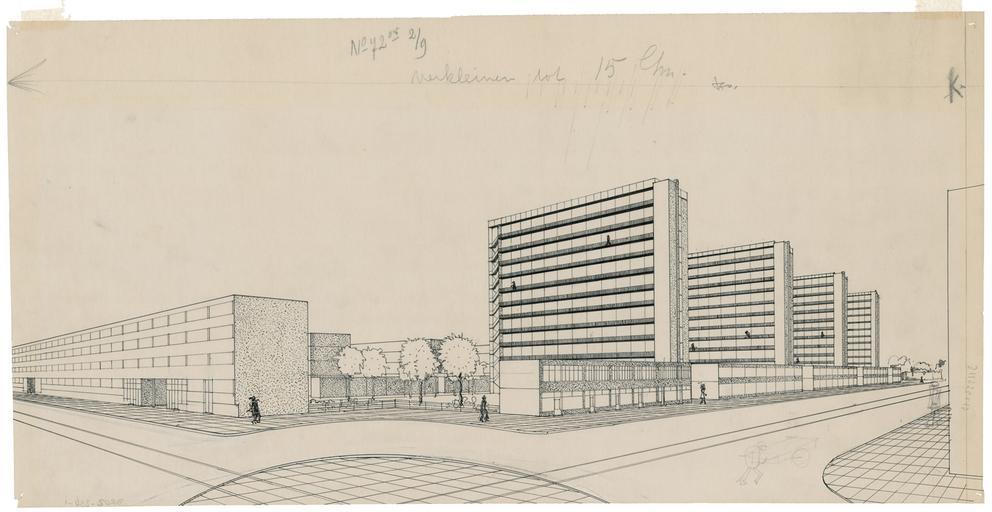MAKE A MEME
View Large Image

| View Original: | 'Optimum'_arbeiderswoningen_|_Workers'_Dwellings.jpg (1500x774) | |||
| Download: | Original | Medium | Small | Thumb |
| Courtesy of: | www.flickr.com | More Like This | ||
| Keywords: architecture urban design urbandesign architectuur stedenbouw gezondheid health volksgezondheid nai collectie collection then/now thennow sketch drawing J.H. van den Broek. Prijsvraagontwerp voor goedkope Arbeiderswoningen, ‘Optimum’, 1934. Collectie NAi, BROZ 236 In het interbellum staat het gezond maken van de stad centraal. Wat gezond is voor de stad, zal ook gezond zijn voor de mensen die haar bewonen. Problemen als het toenemende verkeer, gebrek aan openbare ruimte, opeenstapeling van woningen, de overlast van bedrijven en een structuurloze uitbreiding. De oplossingen worden gezocht in de ordening van het verkeer, de aanleg van parken en parkstelsels, de scheiding van werken en wonen, gezonde woningbouw plattegronden. Rationele verkavelingprincipes garandeerden voldoende licht- en luchttoetreding in wijk en woning. J.H. van den Broek, Competition Design for Affordable Workers’ Dwellings, ‘Optimum’, 1934. NAI Collection, BROZ 236 Making cities healthy was a key concern in the inter-war period: something that is healthy for the city will also be healthy for the people who live there. Planners sought solutions for problems such as increasing traffic, a lack of public space, the accumulation of dwellings, the nuisance caused by industry and unstructured expansion in the regulation of traffic, the creation of parks and park systems, the separation of work and home, and healthy housing and domestic floor-plans. Rational land parcellation principles guaranteed sufficient natural light and fresh air in neighbourhoods and individual dwellings. J.H. van den Broek. Prijsvraagontwerp voor goedkope Arbeiderswoningen, ‘Optimum’, 1934. Collectie NAi, BROZ 236 In het interbellum staat het gezond maken van de stad centraal. Wat gezond is voor de stad, zal ook gezond zijn voor de mensen die haar bewonen. Problemen als het toenemende verkeer, gebrek aan openbare ruimte, opeenstapeling van woningen, de overlast van bedrijven en een structuurloze uitbreiding. De oplossingen worden gezocht in de ordening van het verkeer, de aanleg van parken en parkstelsels, de scheiding van werken en wonen, gezonde woningbouw plattegronden. Rationele verkavelingprincipes garandeerden voldoende licht- en luchttoetreding in wijk en woning. J.H. van den Broek, Competition Design for Affordable Workers’ Dwellings, ‘Optimum’, 1934. NAI Collection, BROZ 236 Making cities healthy was a key concern in the inter-war period: something that is healthy for the city will also be healthy for the people who live there. Planners sought solutions for problems such as increasing traffic, a lack of public space, the accumulation of dwellings, the nuisance caused by industry and unstructured expansion in the regulation of traffic, the creation of parks and park systems, the separation of work and home, and healthy housing and domestic floor-plans. Rational land parcellation principles guaranteed sufficient natural light and fresh air in neighbourhoods and individual dwellings. | ||||